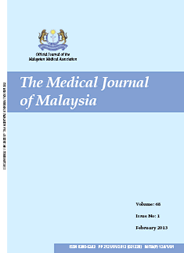MJM, Vol 70 Supplement 1 September 2015
Spatio-temporal bayesian networks for niche modeling
of vector-borne disease
Faculty of ICT, Mahidol University, Thailand
ABSTRACT
Ecological Niche Modeling has become an increasingly popular approach for modelling of vector-borne disease due to its ability to describe heterogeneous spatial patterns of disease at fine-scale resolution, to estimate transmission rates in areas where little or no data are available, and to evaluate targeted control strategies. But current modelling approaches have not yet realised the full potential of this paradigm due largely to limitations of the modelling languages used. Models have captured spatial and temporal variation, with little work addressing spatial correlation and temporal evolution. While the paradigm has the potential to generate explanations of inferred results, the modelling languages used thus far do not directly support this.
In this talk I will show how spatio-temporal Bayesian networks can be used to model spatial variation, spatial correlation, and temporal evolution of disease transmission as well as the relevant co-variates. The network models have the important property of perspicuity – model structure mirrors the underlying processes and can therefore be used to generate causal explanations. In addition, the use of Bayesian probability allows the quantification of uncertainty in both parameters and process and the inclusion of prior knowledge. I illustrate key concepts with our ongoing work on using spatio-temporal Bayes nets for village-level modelling of malaria transmission. As this malaria model illustrates, a further challenge in niche modelling is the labour intensive nature of model construction. I describe our approach to automating the task of model construction by using libraries of model fragments stored as temporal probability logic sentences which are dynamically assembled into Bayes nets based on GIS data. The approach makes possible the rapid construction of fine-scale resolution models over large geographic regions.
